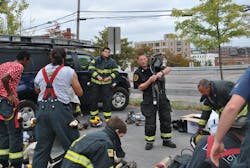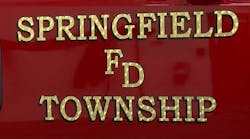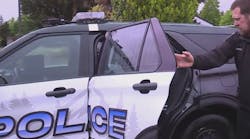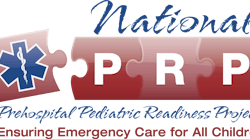This, our final question, should have been our first question, as it succinctly wraps up the essence of this series: How should we, as fire department leaders, demonstrate the value of our services?
What we have addressed throughout this series is that times have changed and many fire departments no longer have the funding or support they once had. We are now required to justify our programs, services and budget expenditures more than perhaps we have been used to.
In our view, as the economy recovers, life is not likely to return to “normal” and a different leadership mindset is required. Progressive-thinking fire service leaders who have developed strong relationships and used metrics to drive decisions have found fewer surprises and experienced less heartburn over the new challenges we face. Managers who did not cultivate strong relationships and led by the seats of their pants are likely to face a challenging future. For the underprepared leader, this change is not just another “bump in the road.” Rather, it is going to be a long-term struggle.
Demonstrate your value
Throughout this series, we have emphasized the importance of metrics in providing quality data to justify our agenda and to frame the challenges or successes we experience while serving our communities. Because we have made the justification for metrics throughout this series, we will not focus on their use or value here. Rather, we will address key areas that progressive leaders can focus on to demonstrate value to the community.
Let’s examine the term “value” through two different lenses, neither of which is directly tied to fiscal needs. First, let’s look at value from the perspective of those we serve – our citizens and our communities.
The importance of building relationships through community engagement cannot be overstated. “It takes a village to raise a child” is a popular proverb with a clear message: the whole community has an essential role to play in the growth and development of its young people.
In our world, the same could be said – without strong community support, the growth and backing of our fire departments will suffer. When leaders do not understand this, community involvement may be regarded as a minor nuisance and is addressed ineffectively, or there may be a lack of knowledge as to how to engage the community. Either way, the result can be disastrous and the progression of the fire department can suffer.
Sharing your vision with the public means being able to effectively convey and share your plan in order to garner public support. An informed and engaged community can greatly enhance your department’s future success. Having an enlightened, involved and loyal citizenry often will turn the tide of if policy makers are indecisive.
Engage your community
Getting out and engaging the community can be accomplished in many ways. We see fire departments engage their communities through many diverse forums. A few examples follow. Keep in mind this is not an exhaustive list.
Annual open house events, which showcase the department, are very popular. Many departments hold open house events in October in celebration of Fire Prevention Month. Some departments hold open house events throughout the year to focus on seasonal safety messages or highlight new activities. Neighborhood fire stations can gain citizen support through the same concept on a smaller scale. Some highlight their agencies in less-formal settings by hosting quarterly “breakfast with the firefighters” or similar events. These are win/win ventures; the community sees how their tax dollars are spent and the members get to interact with customers in a non-emergency setting.
Involvement in community groups is also an excellent way to get your story told and increase visibility for your organization. It can be valuable to join forces with other public safety providers in your community – police and EMS, for example. Service organizations (e.g., Kiwanis and Rotary) can offer valuable access to key community leaders as well. The audience you connect with through service organizations may offer you a different perspective on governance, management and long-range planning because many of their members are the most successful business leaders in your community.
Building community support can be even more effective when you invest the time to build relationship with people one-on-one. Personal interaction can be much more effective than relying completely on written communication of your message. If you want the community to understand and support your fire department, reach out to them. A little bit of camaraderie goes a long way.
Transparency in government
Our second view on “value” is through the lens of local government transparency. As the economy tightened, taxpayers started demanding greater accountability of their government officials and clamoring for transparency and openness of government operations. Transparency and open government refer to making the operations of government readily accessible to the community. Government leaders take note of the number of requests they receive to provide information in a way that demonstrates that citizens are holding government officials accountable. Transparency provides citizens with a view of how and why public policy decisions are made, explaining the nuances of our operations and providing reassurance that tax money is being spent wisely. Transparency creates accountability and accountability builds trust and confidence in government.
The posting of government agendas, minutes and budgets and supporting documents let citizens fully understand the issues, deliberations and conclusions. Many fire departments have adopted the open-government concept in an effort to achieve transparency. Citizens who pay for your services should have easy access to information. This builds trust.
For example, let’s say your department would like to add another fire station. You use dynamic GIS mapping to visually display call data and population data that helps drive your decision-making. This visual depiction of data that demonstrates need can provide the context needed for citizens to gain perspective and understand what you are trying to accomplish beyond just asking them for more money. These documents can display workload comparisons, response and travel-time data, current fire station comparisons, staffing patterns and how stations serve the community. Data can show historical trends and real-time situations and help anticipate future conditions. Visual depiction of community development in a proposed station area could be overlaid with call-dispersion data, again from historical, current and future perspectives. Making this information easily accessible to your citizens can facilitate their feedback and questions.
Bringing our metrics, ideas and issues forward to reveal our decision-making process helps deliver the needed transparency that is expected by our customers. The key idea to grasp is the importance of maintaining quality data collection and making it readily available to those who pay the bills. The citizen rapport and trust is created by transparency in government and can provide leverage for those initiatives that may be contentious. Citizen support and confidence in the fire department are enhanced when the customer is involved and informed in our processes.
Prepare for the future
As the economy improves, the fire service will be settling into our “new normal.” The mission of leading a modern and progressive fire department of the future will require a different leadership mindset and adaptive skills to ensure your services continue to meet community expectations.
Thank you for coming along with us on this journey to address “20 Tough Questions for the Fire Chief.” We hope our answers are helpful to you. Remember, for each of the questions we offered ONE answer, not THE answer. There are many creative ways to address these issues. We simply shared ours. It is our passion to help prepare you to lead your department successfully today and into the future.
Richard Gasaway presents “First Responder Situational Awareness” at Firehouse World 2014.







